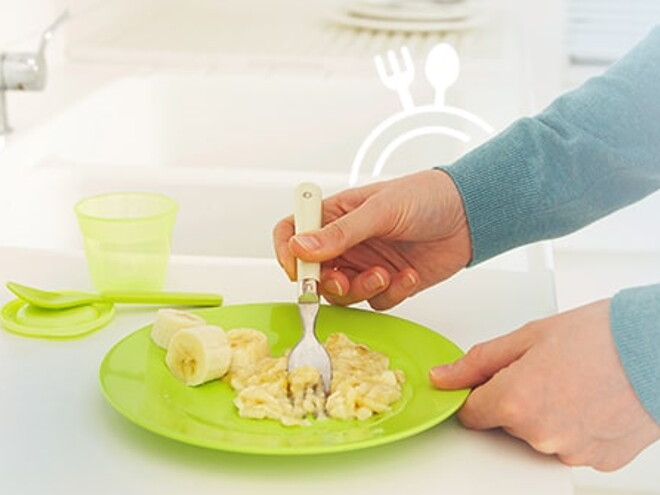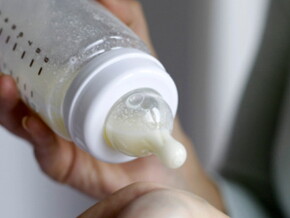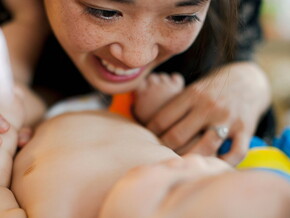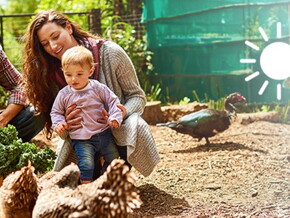
How to help your baby learn to like new foods and textures
As a parent you probably already know that a balanced, nutritious diet is important for your baby’s healthy growth and development. And now is a critical time for her to develop a taste for a variety of foods. This process takes time, as she becomes familiar with new tastes and textures. Your baby may choose not to eat something new at first or be suspicious of anything unfamiliar on her spoon. Don’t be disheartened. It can take several attempts before your baby learns to like a new food. The key is to try, try, and try again. Just as your little one may need to try a new flavor several times before she accepts it, new textures take time too.
New skills, new preferences
At eight to ten months, your baby is learning how to manage eating foods with new textures. She has to move her tongue from side to side to push the food towards her gums for mashing. Her jaw and tongue will also start to be used to mash food.
Foods that felt smooth and consistent to her a couple of months ago, are now offered with lumps, bumps, and bits in them that might surprise her. Teeth might be coming through, which can influence how well she manages new textures too. Babies can be unpredictable diners: she may prefer a texture that melts in her mouth easily today, but next week she’ll prefer a lumpier texture. Try to be patient and give her plenty of chances to learn to accept new textures.
“Offering a food or texture that your baby initially doesn’t like at least eight different times may sound like a lot,” admits Lynda O'Neill, PhD, Senior Nutritionist at Nestlé Nutrition in Michigan, USA, “but evidence shows that offering a new food or texture multiple times can be necessary to promote acceptance. Repeated exposure is more likely to be effective during the first year, when new tastes are more easily accepted.”
Want not, waste not
When offering a new food to your baby, serve a tiny taste or small portion so that you’re not wasting it. Keep the leftovers in the fridge, so you can easily offer some at the next meal or on the next day, for a second or third attempt. You can also try serving the new food mixed with a well-liked food to help ‘bridge’ the new flavor or texture.
Look toward the future
One scientific study revealed that children introduced to lumpy solids after the age of nine months ate fewer fruits and vegetables when they were seven years old, compared with those babies introduced to lumpy foods between the ages of six and nine months. “It’s important that babies move on to new tastes and textures at the appropriate time,” explains O’Neill. “Early exposure is important to the long-term development of children's food preferences.”
Sources
Caton SJ, Blundell P, Ahern SM et al. Learning to eat vegetables in early life: the role of timing, age and individual eating traits. PLoS One 2014; 9(5):e97609.
Coulthard H, Harris G, Emmett P. Delayed introduction of lumpy foods to children during the complementary feeding period affects child’s food acceptance and feeding at 7 years of age. Mater Child Nutr 2009; 5(1)75-85.
Mura Paroche M, Caton SJ, Vereijken C et al. How infants and young children learn about food: A systematic review. Front Psychol 2017; 8:doi.10.3389/psyg.2017.01046
Nicklaus S. Complementary feeding strategies to facilitate acceptance of fruits and vegetables: A narrative review of the literature. Int J Environ Res Public Health 2016; 13(11):1160; doi: 10.3390/ijerph13111160.
Last revised: December, 2017





















